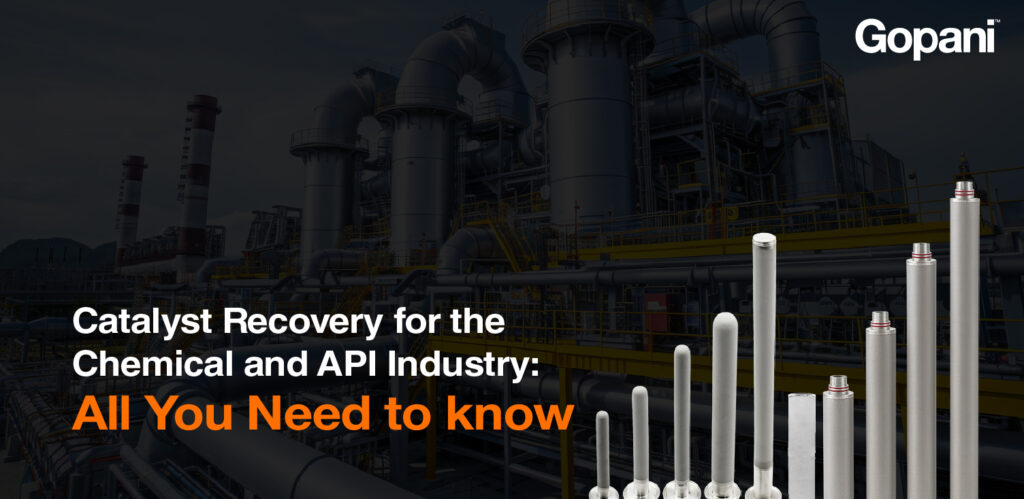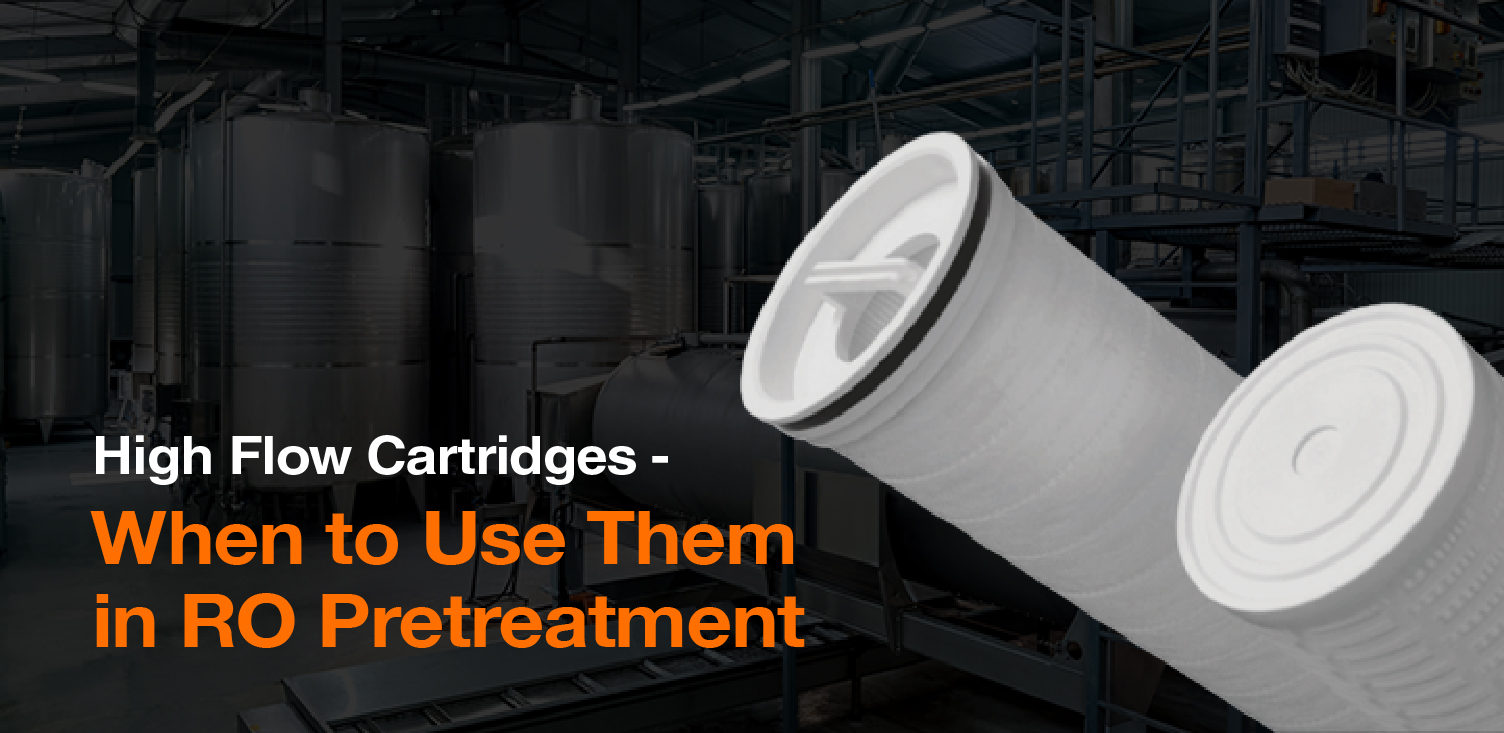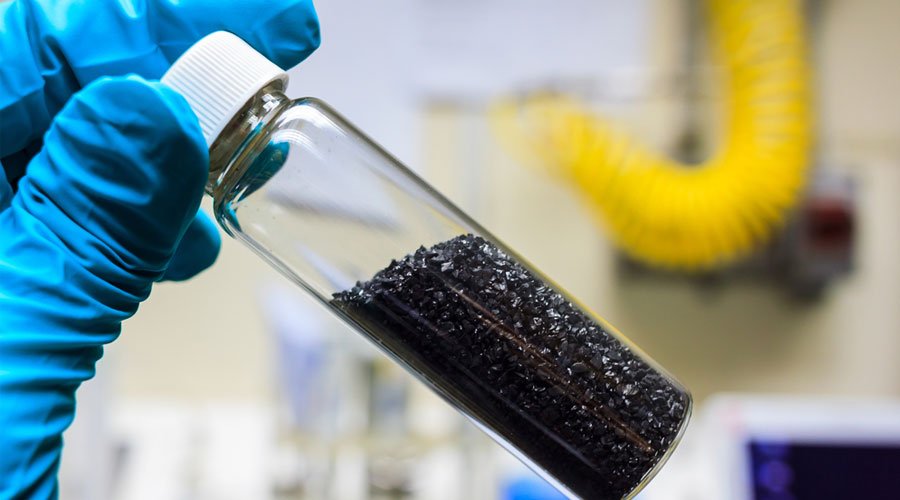
Catalysts play a pivotal role in chemical processes and API (Active Pharmaceutical Ingredient) manufacturing by accelerating reactions and enabling higher yields under manageable conditions. However, catalysts also represent a significant operational cost, particularly when they contain precious metals or specialty materials. Efficient catalyst recovery is therefore essential not only for economic return, but also for sustainability, waste minimization , and reliable process filtration . In this article, we explore the common challenges, catalyst recovery techniques, and how advanced filtration for catalyst recovery, including Gopani’s engineered filter solutions, can transform operations in the chemical and API sectors.
Why Catalyst Recovery Matters
In the chemical and API industry, achieving high catalyst recovery efficiency is critical. When catalysts are lost or contaminated during reaction and separation steps, the cost of replenishment, waste disposal, and process interruptions escalates. Moreover, environmental and regulatory pressures make chemical industry catalyst recovery and efficient reuse essential for sustainability. Modern recovery systems, integrated with filtration in API manufacturing, allow processes to reclaim catalysts, purify process streams, and minimize waste.
Examples include precious-metal catalysts (palladium, platinum, rhodium) or Raney nickel, often used in hydrogenation or specialty chemical reactions. In these cases, specialized catalyst separation technologies and filters ensure high recovery rates (often > 99 %) while keeping filtrate quality and process uptime high.
Common Challenges in Catalyst Recovery
Variability in Catalyst Form and Concentration
Catalysts may exist as fine powders, slurries, coated structures, or precious‐metal particles. Filtration and separation become tricky when particles are sub-micron, dense, or in corrosive/ high-temperature fluids. That makes industrial wastewater treatment challenges relevant when catalysts enter waste streams.
Contaminated Filtrate / Catalyst Loss
If filtration media are not precise, catalysts may pass through or become entrapped inefficiently, causing reputational and economic losses. Maintaining high catalyst recovery efficiency is critical.
Harsh Process Conditions
API manufacturing and specialty chemical processes may operate under high temperature, high pressure, aggressive solvents or acids. Filtration and recovery systems must be built for chemical process filtration under extreme operating conditions.
Waste & Environmental Impact
Discarded catalysts or contaminated process fluids contribute to waste streams. Effective recovery supports sustainable catalyst recovery and waste minimization in the chemical industry.
Downtime & Maintenance
Frequent filter changeouts, downtime for cleaning, or leaks/spills can degrade process efficiency. Robust catalyst recovery systems must support easy cleaning, minimal downtime, and long service life.
Filtration Techniques for Catalyst Recovery
Several catalyst recovery techniques are in use across industries. Key methods include catalyst filtration systems suited to different catalyst types and process conditions
- Filtration (surface or depth): For heterogeneous catalysts, filtration remains a preferred method because it separates catalysts based on physical/chemical differences.
- Cross-flow / tangential flow filtration: Especially useful for dense slurries or small catalyst particles.
- Sintered metal filters: Provide high mechanical strength, corrosion/thermal resistance and are reusable, ideal in harsh process conditions.
- Backwashable / automated systems: These help in cleaning filters in situ without system shutdown.
- Catalyst recoverysystems: Integrated skids combining filtration, cake removal, wash, reclaim and system controls.
Each technique must be aligned with catalyst type, particle size, slurry concentration and fluid chemistry.
Also Read: The Ideal Filtration Process for Catalyst Recovery
Gopani’s Filtration Solutions for Catalyst Recovery
When you require filtration for API manufacturing or catalyst recovery in chemical manufacturing, Gopani offers engineered filter media and housings built for rigorous conditions. Key features include:
By leveraging Gopani’s solutions, chemical and API plants can achieve higher catalyst recovery rates, improved process uptime, and lower overall lifecycle costs.
Case in Point: Catalyst Recovery in API/Hydrogenation
In an API hydrogenation step using palladium-on-carbon, the catalyst slurry must be filtered to reclaim valuable palladium and supply a clarified filtrate for downstream processing. This is a typical application of precious metal recovery filtration, where both catalyst value and filtrate clarity are critical. Using sintered metal filtration elements, with proper alloy selection and in-situ cleaning, enables recovery of the catalyst cake, minimal loss ( less than 1 ppm), and improved process uptime. The system supports sustainable catalyst recovery and maintains product integrity for pharma downstream steps.
Designing an Efficient Recovery Workflow
To build an effective catalyst recovery system, follow these steps:
- Characterize catalyst slurry: Understand particle size distribution, solids content, chemistry, temperature.
- Select appropriate media and technology: For harsh fluids and fine particles, sintered metal filters; for moderate loads, depth filtration may suffice.
- Design for recovery and reuse: Filter housings with cake discharge, back-wash or CIP systems reduce downtime.
- Ensure process integration: Downstream clarity (filtrate quality) and upstream catalyst recycling loop must be efficient.
- Ensure safety & containment: Catalyst slurries may be hazardous, leak-proof filters, proper venting, closed systems are essential.
- Optimize lifecycle cost: Choose filters with long service life, few change-outs, minimal maintenance to enhance catalyst recovery efficiency and process economics.
The Business & Environmental Benefits
Effective catalyst recovery provides multiple benefits:
Conclusion
In the chemical and API industries, catalyst recovery is no longer optional- it’s essential for cost-control, process integrity and sustainability. Facing challenges such as variable slurry properties, harsh chemistry, complex separation and waste generation, operators must adopt advanced filtration for catalyst recovery, catalyst recovery systems, and integrated separation workflows. Partnering with filtration specialists such as Gopani ensures you can deploy solutions that are built for your process needs, whether that’s sintered metal filter elements, custom housings, or turnkey systems for catalyst separation technologies. The right solution enables you to reclaim your catalysts, safeguard product quality, minimize waste and drive operational excellence.








